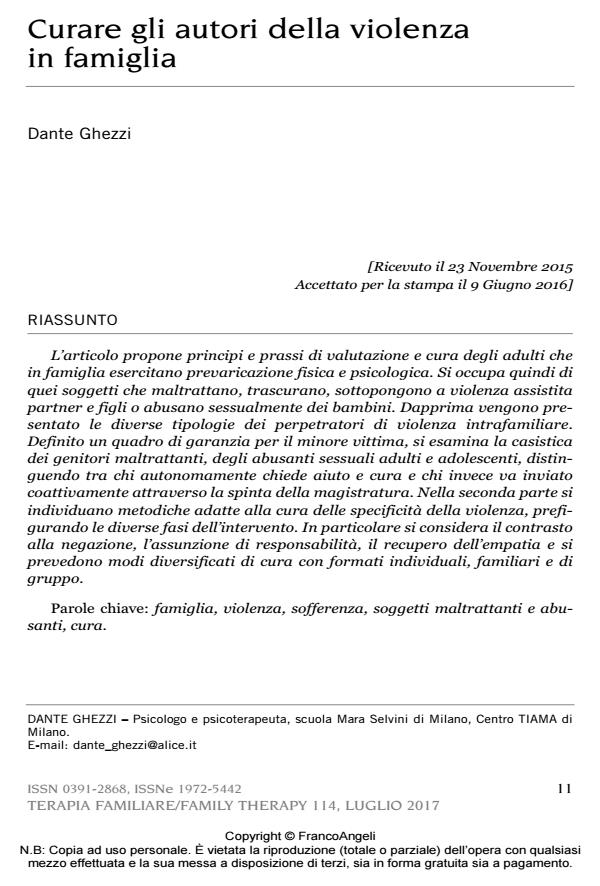Curare gli autori della violenza in famiglia
Journal title TERAPIA FAMILIARE
Author/s Dante Ghezzi
Publishing Year 2017 Issue 2017/114
Language Italian Pages 25 P. 11-35 File size 145 KB
DOI 10.3280/TF2017-114002
DOI is like a bar code for intellectual property: to have more infomation
click here
Below, you can see the article first page
If you want to buy this article in PDF format, you can do it, following the instructions to buy download credits

FrancoAngeli is member of Publishers International Linking Association, Inc (PILA), a not-for-profit association which run the CrossRef service enabling links to and from online scholarly content.
The article proposes principles and practices in assessment and treatment of adults who are abusive in their family. They can be physically and psychologically violent as they maltreat, neglect, create a domestic violent environment and they sexually abuse their children. At the beginning, we present different types of perpetrators of intrafamily violence. After defining a security plan for children and adolescents victims, we introduce different types of maltreating parents, adults and adolescents abusers, distinguishing between those who autonomously ask for help and treatment and those who start treatment coactively following an indication by magistracy. In the second part different treatment methods to treat violence are presented, suggesting different phases of intervention. In particular, we discuss the relevance of denial contrast, responsibility assumption, empathy recovery and we introduce to different formats such as treatment of individuals, of families and groups.
Keywords: Family, violence, pain, abusers, abused, treatment.
Dante Ghezzi, Curare gli autori della violenza in famiglia in "TERAPIA FAMILIARE" 114/2017, pp 11-35, DOI: 10.3280/TF2017-114002